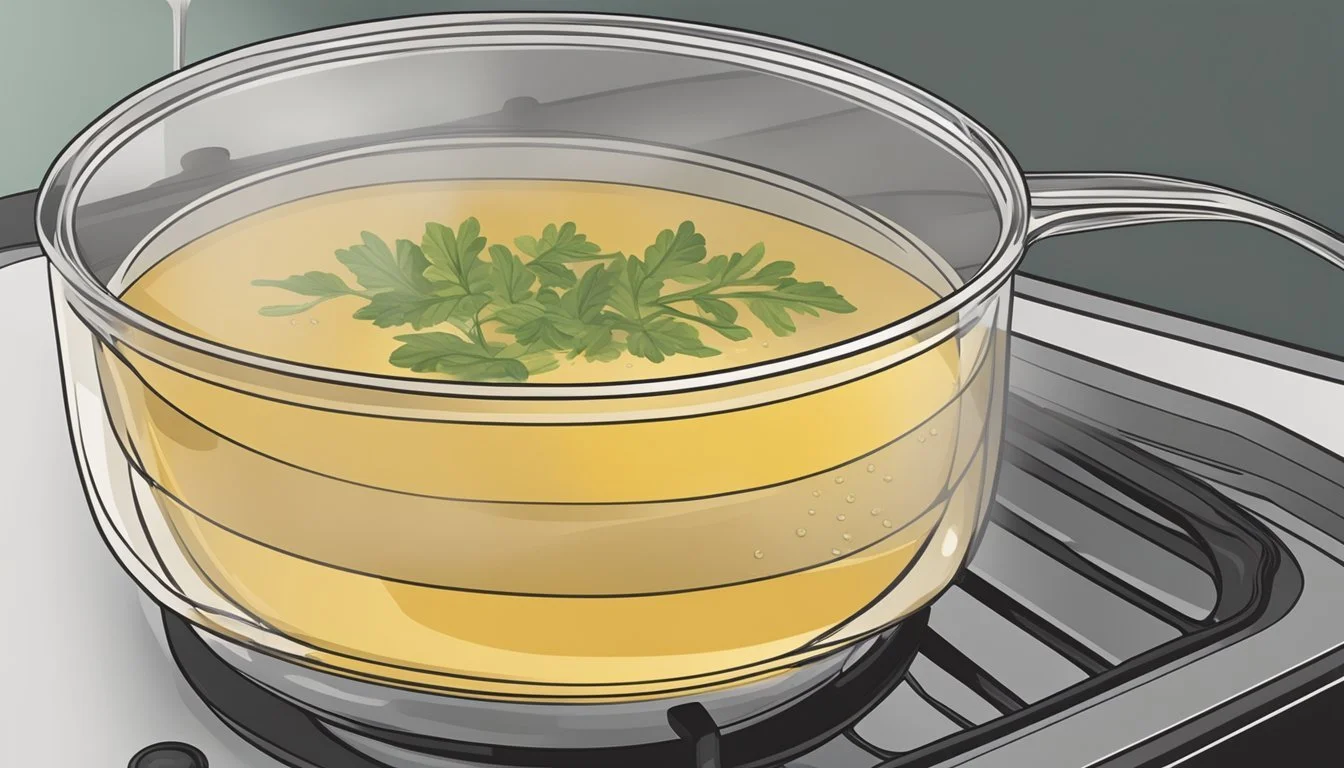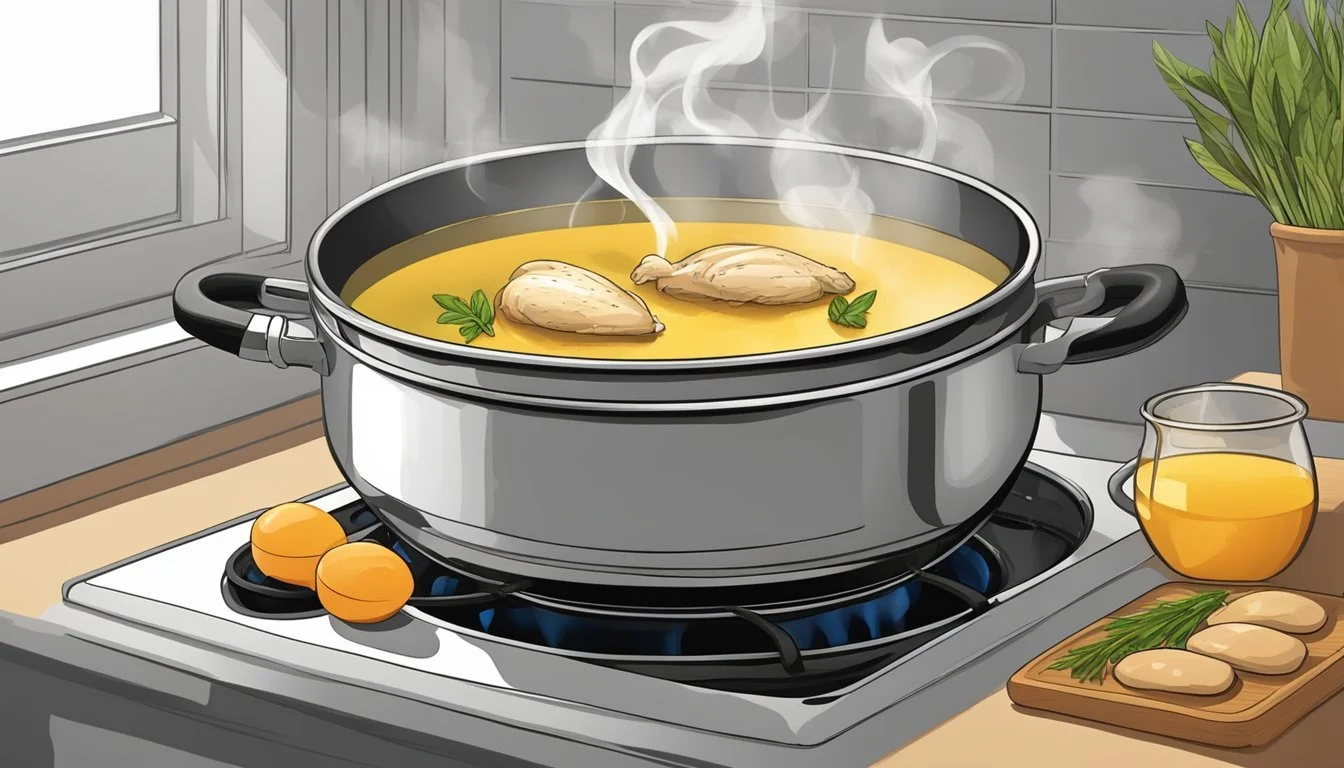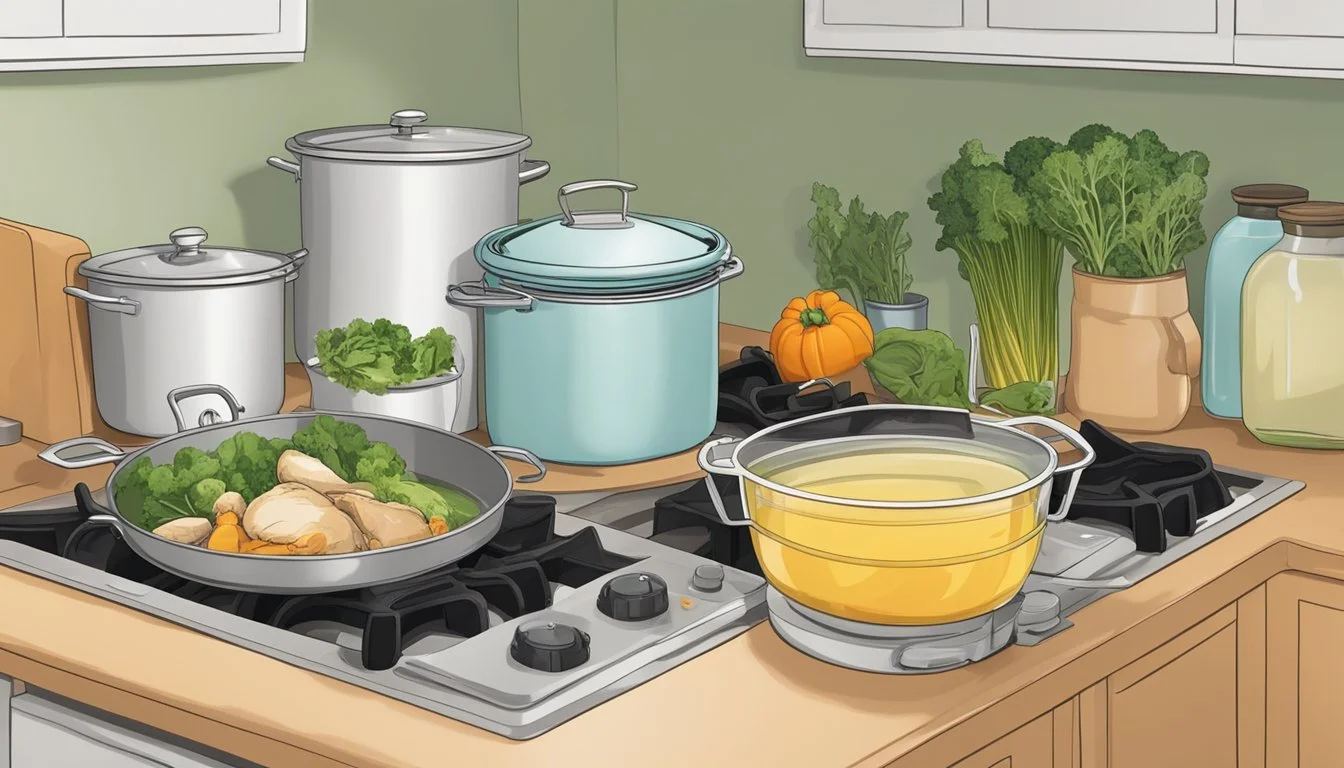Does Chicken Broth Go Bad?
Essential Storage Tips and Shelf Life
Chicken broth is a staple in many kitchens, serving as the foundation for soups, sauces, and a variety of dishes. It is crucial to know whether your chicken broth is still safe to use, as consuming spoiled broth can pose health risks. Yes, chicken broth can go bad, and understanding the signs of spoilage is key to maintaining both the quality and safety of your meals.
Fresh chicken broth, whether homemade or store-bought, should be checked for spoilage indicators like an off smell, an unusual color, or the presence of mold. Even when stored properly in the refrigerator, it should be discarded if kept for more than 3-4 days. Storing chicken broth in an airtight container and refrigerating or freezing it can help prolong its shelf life and maintain its quality.
If you opt to freeze chicken broth, use freezer bags or ice cube trays to portion it out conveniently. When needed, defrosting in the refrigerator ensures it remains safe for consumption. By following these practices, you can ensure that your chicken broth remains a reliable and tasty ingredient in your cooking.
Understanding Chicken Broth
Chicken broth, used in various dishes, comes in different forms, each with unique properties. It also offers nutritional benefits that enhance the flavor and healthfulness of recipes.
Varieties of Chicken Broth
Homemade Chicken Broth: Made from simmering chicken bones, meat, and vegetables. This version is often richer and customizable. Freshly made, it should be stored in the refrigerator for up to 5 days or frozen for longer preservation.
Store-bought Chicken Broth: Available in canned, boxed, or cubed forms. Canned Chicken Broth has a long shelf life, about a year unopened, and should be used within 3-4 days once opened. Boxed Chicken Broth also offers convenience and similar storage guidelines. Chicken broth cubes provide a concentrated form, dissolved in water for quick use.
Chicken Stock: Similar to broth but made mainly from bones, resulting in a more gelatinous texture. This is ideal for soups and stews, offering a deeper flavor profile.
Nutrition and Use in Cooking
Chicken broth is low in calories but rich in flavor, making it a staple in many kitchens. It contains protein, essential for body repair and growth, and small amounts of fats. Vitamins and minerals from simmered vegetables contribute additional nutrients, including vitamins A and C, and potassium.
Commonly used in soups, stews, gravies, and sauces, chicken broth enhances the flavor of dishes without overpowering other ingredients. For health-conscious cooks, low-sodium varieties are available.
Using chicken broth instead of water can add depth to your meals. Whether simmering vegetables, cooking grains, or deglazing a pan, the broth provides a subtle, savory boost.
Storage Fundamentals
Effective storage of chicken broth ensures safety and maintains its best quality. This section covers essential aspects of storing chicken broth properly, including optimal conditions and varying methods based on whether it's opened or unopened.
Proper Conditions for Storing Chicken Broth
Chicken broth needs to be stored under specific conditions to prevent spoilage. Unopened store-bought broth can last for months when stored in a cool, dark place like a pantry. Once opened, broth must be transferred to an airtight container and refrigerated.
Temperature plays a significant role in extending the shelf life. Keeping chicken broth in a refrigerator at or below 40°F (4°C) is crucial. This prevents bacterial growth and extends its usability.
Differentiating Between Opened and Unopened Broth
Unopened broth remains stable for a long time due to commercial sealing and preservatives. Check the "best by" date on the packaging for guidance.
Opened broth, however, has a shorter shelf life. Once exposed to air, it should be stored in the refrigerator and used within 3-4 days. Transfer the opened broth to an airtight container to maintain its freshness.
If not used within this timeframe, consider freezing it.
Pantry vs. Refrigeration
Pantry storage is only suitable for unopened broth. The dark and cool environment keeps it stable until the "best by" date.
However, once broth is opened, it must be refrigerated immediately. The refrigerator slows down microbial growth and keeps the broth safe for several days. Always ensure the lid is tightly sealed to prevent cross-contamination and off-odors in the fridge.
Freezing Techniques
Freezing is an effective method for long-term storage of chicken broth. Cool the broth completely before transferring it to freezer bags or ice cube trays.
Pour the broth, leaving about an inch for expansion. Label the bags with the freezing date. Laying them flat helps save space and speeds up freezing. Frozen chicken broth can last up to 2-3 months and is convenient for use in varied portion sizes.
Shelf Life and Spoilage
Chicken broth can go bad just like any other perishable food. Proper storage and attention to spoilage signs are crucial for ensuring safety and maintaining quality.
Identifying Spoilage
Spoiled chicken broth is typically characterized by changes in its appearance, odor, and taste. Common signs include:
Off Smell: A sour or rotten odor indicates spoilage.
Color Change: Fresh broth is clear, often golden, but spoiled broth may appear cloudy or darkened.
Texture: The presence of mold or a slimy texture is a clear sign of spoilage.
Taste: If it tastes sour or off, it should be discarded.
It's essential to discard any broth exhibiting these signs to avoid the risk of foodborne illness.
Factors Affecting Shelf Life
The shelf life of chicken broth depends on whether it is store-bought or homemade, and the storage method used:
Unopened Store-Bought Broth: Can last up to a year past its best-by date if stored in a cool, dry place.
Opened Store-Bought Broth: Should be transferred to an airtight container and refrigerated, usually lasting 3-4 days.
Homemade Broth: Typically lasts 3-4 days in the refrigerator. Freezing extends this shelf life significantly.
Freezing: Both homemade and store-bought broth can be frozen to prolong shelf life. Use freezer-safe containers and leave space for expansion.
Expiration and Best-By Dates
The label date on chicken broth is a useful guide:
Expiration Date: Indicates the last date the manufacturer guarantees product quality and safety.
Best-By Date: Suggests when the broth will be at its peak quality. It is still usually safe to consume for a short period after this date if stored correctly.
Regularly checking these dates can help ensure broth is used while it remains safe and flavorful. Expired broth might not only taste off but pose health risks.
Safe Consumption and Health Risks
Ensuring chicken broth is safe to use is critical to avoid food poisoning. Knowing the quality markers and how to store leftovers correctly helps maintain safety and flavor.
Signs Chicken Broth has Gone Bad
Recognizing the signs of spoiled chicken broth is key to ensuring it's safe to eat. Off flavors and aromas are immediate indicators. When chicken broth smells sour or off, it is likely spoiled and should be discarded.
Changes in color and texture are also important signs. Broth that appears cloudy or has a slimy texture is no longer safe for consumption. Always inspect the broth for mold growth, which appears as green or white spots on the surface.
To avoid sickness from harmful bacteria like Salmonella, do not consume broth that has been open for more than four days in the refrigerator. Always be cautious and when in doubt, discard any broth showing these telltale signs.
Preventing Food Poisoning
Proper storage is crucial to prevent contamination and maintain the quality of chicken broth. Refrigerate chicken broth within two hours of cooking or opening to minimize the growth of harmful bacteria. When refrigerating, store broth in airtight containers to preserve its flavor and quality.
Freezing is an effective method to extend the shelf life. Cool the broth completely before freezing to prevent freezer burn, and use freezer-safe containers or ice cube trays. Homemade chicken broth can last up to six months in the freezer, while store-bought varieties can be frozen for four months.
By following these simple steps, one can ensure the broth remains safe to consume and rich in flavor, reducing the risk of food poisoning and maintaining its culinary use.
Effectively Using and Preserving Chicken Broth
Preserving chicken broth efficiently and using it innovatively ensures that none of this delicious, nutritious liquid goes to waste.
Innovative Ways to Freeze Broth
Freezing chicken broth extends its shelf life significantly. Homemade broth can last up to six months in the freezer, while store-bought broth is good for about four months. It is essential to allow the broth to cool completely before freezing.
One effective method involves pouring the broth into ice cube trays. Once frozen, transfer the cubes to a freezer-safe container or bag. These cubes are convenient for adding a small amount of broth to recipes without defrosting an entire batch.
Label your containers with the date to monitor freshness. Large freezer-safe containers work well for bulk portions. Ensure they are airtight to avoid freezer burn and maintain broth quality.
Extending Broth Quality Through Cooking
Proper techniques can enhance the flavor and longevity of chicken broth. Skimming fat from the surface during cooking prevents the broth from becoming greasy. This step is significant for clarity and taste.
Straining the broth through a fine mesh strainer removes solid bits, improving texture and appearance.
Once the broth is finished and cooled, it can be stored in the refrigerator for up to four days. For longer storage, freezing is recommended.
Extra spices or bouillon cubes can be added to store-bought broth to enrich its flavor. This step is especially useful for soups and rice dishes, making the dining experience more enjoyable.
Common Misconceptions About Chicken Broth
There are many myths and misunderstandings about chicken broth, particularly regarding storage and differentiation from soups and other broths. Clarifying these can help ensure safe consumption and proper use.
Myths About Storage and Shelf Life
Storage Duration and Safety:
A common misconception is that chicken broth can be stored indefinitely. Store-bought, unopened broth has a relatively long shelf life, but it deteriorates once opened. Keeping opened chicken broth in the refrigerator for more than 3-4 days or at room temperature for over 2 hours could lead to spoilage, marked by an off smell, discoloration, or growth on the surface.
Indicators of Spoilage:
Some believe that a cloudy appearance alone indicates spoilage. In reality, cloudy broth can happen even without spoilage due to sediment from ingredients. Spoiled broth is more accurately identified by a funny or off smell, slimy texture, or unusual growth. Swollen containers of commercial broths may signal bacterial or yeast contamination.
Freezing Broth:
It's also mistakenly thought that freezing deteriorates quality. When properly stored in freezer bags or ice cube trays, chicken broth retains its quality for several months. Do not freeze hot liquids; let them cool to room temperature first.
Misinterpretation of Soups and Broths
Differences from Soups:
Many confuse chicken broth with chicken soup. Broth serves as a base for soups, but it doesn’t usually contain solids like meat or vegetables you find in soups. Homemade and store-bought broths are clear liquids intended for cooking rather than ready-to-eat meals, unlike soups that are more substantial.
Comparison to Other Broths:
Another frequent mix-up involves beef broth and chicken broth. While both serve similar culinary purposes, their flavors, preparation methods, and fat content can differ. Chicken broth often has a different texture and less fat than beef broth. Both can become slimy if spoiled, yet should each maintain a clean flavor if stored properly.
Sustainable Practices to Minimize Waste
Minimizing waste when using chicken broth involves mindful consumption and practical repurposing of nearly-expired broth. Implementing sustainable practices can help reduce food waste and extend the use of perishable foods like broth.
Mindful Use of Broth in Recipes
Incorporating chicken broth into a variety of recipes ensures that none of it goes to waste. It can be used in soups, sauces, and even to cook grains. Planning meals that use chicken broth across multiple dishes during its freshness period saves an unopened box from being forgotten and expiring in the pantry.
Take an inventory of pantry items and plan recipes that can include leftover broth. Opt for recipes that require small quantities to stretch the duration of broth usage. Additionally, homemade chicken stock can be frozen in portion-sized containers for convenient use and longer shelf life.
Repurposing Nearly-Expired Broth
Using nearly-expired chicken broth creatively can prevent it from ending up in the waste. When the use by date approaches, consider repurposing it into more stable forms like soup bases, which can be stored longer. Similarly, adding it to vegetable stews or beef broth recipes can enhance flavors while utilizing the broth efficiently.
Freezing the broth in ice cube trays offers easy portion control and prevents overuse. These cubes can later be added to recipes in measured amounts. Consistency in monitoring the expiration dates of both store-bought and homemade chicken stock helps maintain their freshness and maximizes their use without unnecessary waste.







